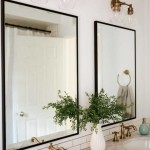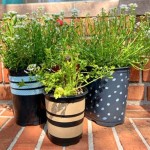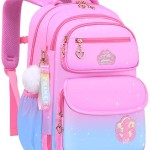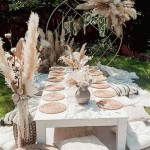Designing a Nursery with Baby Purple: A Comprehensive Guide to Home Decor
The selection of a color palette for a baby's nursery is a significant decision, influencing not only the aesthetic appeal of the room but also potentially impacting the child's mood and development. While traditional gender-specific colors remain popular, baby purple offers a versatile and modern alternative. This article provides a comprehensive guide to incorporating baby purple into a nursery's home decor, covering key aspects such as color pairings, furniture selection, wall treatments, and accessory choices.
Understanding the Psychology of Baby Purple
Purple, in general, is often associated with royalty, wisdom, and creativity. In its lighter, "baby" form, purple evokes feelings of tranquility, peace, and gentleness. It is considered a softer, less stimulating color compared to brighter hues, making it suitable for creating a calming environment conducive to sleep and relaxation for infants. Furthermore, baby purple is considered gender-neutral, breaking away from traditional color stereotypes and allowing for a broader range of design possibilities.
The psychological impact of color is a complex subject, and while direct causal links between color and infant behavior are difficult to establish definitively, research suggests that visual stimuli can influence mood and perception. Baby purple, with its calming and gentle properties, can contribute to a serene atmosphere in the nursery, potentially aiding in the establishment of healthy sleep patterns and a sense of security for the baby.
Complementary Color Palettes: Expanding Beyond Monochromatic Schemes
While a monochromatic baby purple nursery is possible, it is generally more visually appealing and stimulating to incorporate complementary colors. The key to a successful color palette lies in creating a balance between the dominant hue and its supporting shades. Several color combinations work exceptionally well with baby purple:
Baby Purple and White: This is a classic and timeless combination that evokes a sense of purity and cleanliness. White walls with baby purple accents in furniture and accessories create a bright and airy space. Conversely, baby purple walls with white furniture provide a bolder, yet still calming, aesthetic.
Baby Purple and Gray: Gray adds a touch of sophistication and modernity to the nursery. A light gray provides a neutral backdrop that allows the baby purple elements to stand out. Darker grays can be used for accents, creating a more dramatic effect, but should be used sparingly to avoid overwhelming the space.
Baby Purple and Green: This pairing evokes a sense of nature and growth. Soft greens, such as mint or sage, complement baby purple beautifully, creating a calming and harmonious environment. Consider incorporating natural elements, such as plants or wooden furniture, to enhance the connection with nature.
Baby Purple and Yellow: A muted or pastel yellow can add a touch of warmth and cheerfulness to a baby purple nursery. However, caution is advised when using yellow, as too much can be overstimulating. Opt for a light, buttery yellow and use it sparingly as an accent color.
Baby Purple and Pink: While often associated with traditional gender roles, a subtle combination of baby purple and a soft, muted pink can create a delicate and charming nursery. The key is to avoid overly bright or saturated pinks, opting for hues like blush or rose quartz.
When selecting a color palette, it is important to consider the impact of each color on the overall atmosphere of the room. Aim for a balance between stimulating and calming elements, ensuring that the nursery is a welcoming and relaxing space for the baby.
Furniture Selection: Functionality and Aesthetics in Harmony
The selection of furniture for a baby purple nursery should focus on both functionality and aesthetics. Essential pieces of furniture include a crib, a changing table, a dresser, and a comfortable seating area for parents. When choosing furniture, prioritize safety, quality, and durability.
Crib: The crib is the focal point of the nursery, so it is important to choose a design that complements the overall theme. White or light wood cribs work well with baby purple, creating a clean and classic look. Alternatively, a baby purple crib can be a statement piece, but should be balanced with neutral walls and accessories.
Changing Table: A changing table provides a safe and convenient space for diaper changes. Choose a changing table with ample storage for diapers, wipes, and other essentials. A white or light wood changing table is a versatile option that will coordinate with any color scheme.
Dresser: A dresser provides storage for baby clothes and other items. Choose a dresser that is sturdy and well-made, with ample drawer space. A dresser in a complementary color, such as white or gray, can add visual interest to the room.
Seating Area: A comfortable seating area is essential for parents to relax and spend time with their baby. A glider or rocking chair provides a gentle motion that can soothe the baby. Choose a chair with comfortable cushions and a supportive back. Consider adding a side table and a lamp to create a cozy and inviting space.
When selecting furniture, prioritize pieces that are made from safe, non-toxic materials. Avoid furniture with sharp edges or small parts that could be a choking hazard. Ensure that all furniture meets current safety standards and is properly assembled.
Consider incorporating furniture with storage solutions that help keep the nursery organized and clutter-free. Baskets, shelves, and organizers can be used to store toys, books, and other items. A well-organized nursery is not only visually appealing but also more functional and safe.
Wall Treatments: Creating a Calming and Visually Appealing Space
Wall treatments play a crucial role in setting the tone of the nursery. The choice of paint color, wallpaper, or other decorative elements can significantly impact the overall atmosphere of the room.
Paint: Baby purple paint is a simple and effective way to transform the walls of the nursery. Choose a low-VOC or no-VOC paint to ensure the safety of the baby. Consider painting an accent wall in a darker shade of purple or a complementary color to add visual interest.
Wallpaper: Wallpaper can add texture and pattern to the nursery walls. Choose a wallpaper with a subtle pattern in baby purple or a complementary color. Avoid wallpapers with overly busy or distracting patterns, as these can be overstimulating for the baby.
Wall Decals: Wall decals are a removable and affordable way to add personality to the nursery walls. Choose decals with baby-friendly designs, such as animals, stars, or flowers. Position the decals at a height that the baby can easily see and interact with.
Murals: A mural can create a stunning and unique focal point in the nursery. Consider painting a mural of a whimsical landscape or a calming scene. If painting a mural is not feasible, consider using a large-scale wall decal or a printed canvas.
When choosing wall treatments, consider the overall theme of the nursery and the desired atmosphere. Aim for a balance between visual interest and a calming environment. Avoid using harsh or contrasting colors that could be overstimulating for the baby.
Consider adding texture to the walls through techniques such as stenciling or faux painting. These techniques can add depth and dimension to the room without overwhelming the space. Incorporating natural elements, such as wooden panels or woven wall hangings, can also add warmth and texture to the nursery.
Accessories and Décor: Adding the Finishing Touches
Accessories and décor are the finishing touches that personalize the baby purple nursery and create a cohesive and inviting space. Careful selection of accessories can enhance the overall theme and add pops of color and texture.
Textiles: Choose soft and comfortable textiles for the nursery, such as curtains, blankets, and rugs. Baby purple curtains can create a calming and soothing atmosphere. A soft rug provides a comfortable place for the baby to play. Choose fabrics that are easy to clean and hypoallergenic.
Lighting: Proper lighting is essential in the nursery. A dimmer switch allows for adjusting the light level to create a relaxing atmosphere for sleep. A night light provides a soft glow for nighttime feedings and diaper changes. Choose lamps with shades that diffuse the light and prevent glare. Avoid using harsh or fluorescent lighting.
Artwork: Artwork can add personality and visual interest to the nursery walls. Choose artwork that is age-appropriate and visually stimulating for the baby. Consider hanging framed prints of animals, nature scenes, or abstract designs. Avoid artwork with overly complex or distracting patterns.
Mobiles: A mobile hanging above the crib can provide visual stimulation for the baby. Choose a mobile with soft, plush toys in baby purple and complementary colors. Ensure that the mobile is securely attached to the crib and is out of reach of the baby.
Storage Baskets: Storage baskets are a practical and stylish way to keep the nursery organized. Choose baskets in baby purple or complementary colors to store toys, books, and other items. Opt for baskets made from natural materials, such as wicker or cotton.
When selecting accessories, prioritize safety and comfort. Avoid accessories with small parts that could be a choking hazard. Choose materials that are soft, hypoallergenic, and easy to clean. Consider incorporating personalized items, such as framed photos or handmade crafts, to add a personal touch to the nursery.
The effective use of baby purple in a nursery depends on a holistic approach that considers color psychology, complementary palettes, functional furniture, engaging wall treatments, and appropriate accessories. This approach can help create a functional, aesthetically pleasing, and safe environment for the infant.

Nursery Decor Girl Purple Lavender And

Pin On Home Decor




Pin On 1909
Inspiration For A Purple Baby Girl Nursery

Pin On Home Decor


Pin On Home Exterior Makeover







